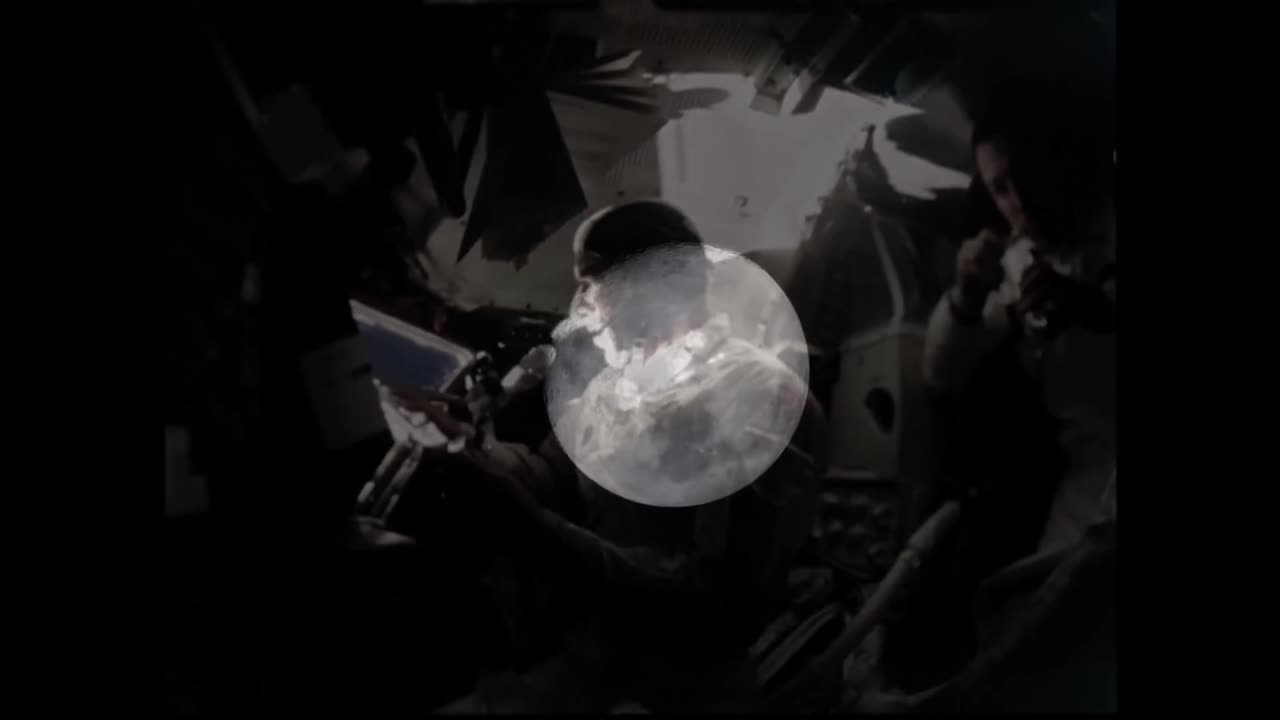Premium Only Content

Journey of Apollo 12
Apollo 12 was launched on November 14, 1969, from Kennedy Space Center in Florida. The crew consisted of three astronauts:
Charles "Pete" Conrad Jr. - Commander
Richard F. Gordon Jr. - Command Module Pilot
Alan L. Bean - Lunar Module Pilot
Lightning Strike:
Shortly after liftoff, Apollo 12 encountered a highly unusual and potentially disastrous event. The Saturn V rocket was struck by lightning twice, causing a temporary loss of telemetry and electrical power. Fortunately, the crew and ground control teams managed to troubleshoot and recover the systems, and the mission continued.
Lunar Landing:
Apollo 12's target was the Ocean of Storms on the Moon. The Lunar Module, named "Intrepid," successfully separated from the Command Module and descended to the lunar surface. The precision landing was near the Surveyor 3 spacecraft, which had landed on the Moon previously. The crew conducted two moonwalks, during which they collected samples, deployed scientific instruments, and conducted experiments.
Surveyor 3:
One of the notable objectives of Apollo 12 was to retrieve parts from the Surveyor 3 spacecraft that had landed on the Moon in 1967. The astronauts collected camera and other components from Surveyor 3 to study the effects of long-term exposure to the lunar environment.
Exploration and Activities:
During their moonwalks, Conrad and Bean explored the lunar surface, collected samples of rocks and soil, and set up various scientific instruments. They also took photographs and conducted experiments, contributing valuable data to our understanding of the Moon's geology and environment.
Return to Earth:
After spending about 31 hours on the lunar surface, the Lunar Module's ascent stage lifted off from the Moon to rendezvous with the Command Module and Gordon in lunar orbit. The crew then began their journey back to Earth. Apollo 12 safely splashed down in the Pacific Ocean on November 24, 1969.
Legacy:
Apollo 12 demonstrated the ability of the Apollo program to overcome challenges and carry out successful lunar missions even in the face of unexpected difficulties. The mission provided valuable scientific data and contributed to our understanding of lunar geology. The successful retrieval of parts from Surveyor 3 also provided insights into the effects of the lunar environment on materials.
Apollo 12's journey showcased the resilience and resourcefulness of NASA's astronauts and ground control teams, and it added another chapter to the exploration of the Moon, paving the way for subsequent Apollo missions.
-
 LIVE
LIVE
The Quartering
1 hour agoCrowder Roasts Entitled Black Man, Hasan Piker Meltdown, Leftoid Instant Regret!
1,928 watching -

DeVory Darkins
1 hour agoKash Patel drops DEVASTATING NEWS for Democrats as ANTIFA suffers MAJOR LEGAL BLOW
20.5K26 -
 LIVE
LIVE
Dr Disrespect
5 hours ago🔴LIVE - DR DISRESPECT - ARC RAIDERS - THE ULTRA EXTRACTION GAME
1,775 watching -
 LIVE
LIVE
The White House
1 hour agoPresident Trump Participates in a Bilateral Lunch with the President of Ukraine
945 watching -
 LIVE
LIVE
Barry Cunningham
13 hours agoBREAKING NEWS! PRESIDENT TRUMP MEETS WITH UKRAINE PRESIDENT ZELENSKY!
1,303 watching -
 LIVE
LIVE
Lara Logan
12 hours agoTHE ONLYFANS SCAM: Victoria Sinis Breaks Down the Dangers and Lies Targeting Your Children | EP 40
288 watching -

Sean Unpaved
2 hours agoRodgers-Flacco TNF Showdown, CFB Week 8 Upsets, NFL Week 7 Edges, & Weekend Locks
4.49K -
 UPCOMING
UPCOMING
Daniel Davis Deep Dive
4 hours agoTrump Tomahawks Meeting w/Zelensky
99 -
 2:05:45
2:05:45
The Culture War with Tim Pool
21 hours agoWokeness Is Dying, Conservatives Are Winning & Taking Back Entertainment | The Culture War Podcast
122K52 -
 1:57:51
1:57:51
The Charlie Kirk Show
2 hours agoZelenskyy Gets to Know the King + Bolton Busted + NYC Showdown + AMA | Davis, McCoy | 10.17.2025
31.5K7